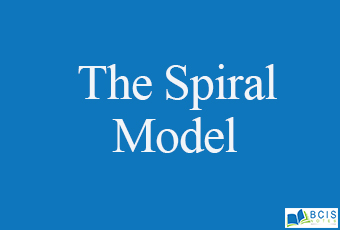
Spiral Model
The Spiral Model is one of the important SDLC models to be used widely in software engineering to ensure the success of the project. The TheSpiral Model model is the whole process of software development which is divided into separate phases. In other words, The spiral model is a risk-driven software development process model. Based on the unique risk patterns of a given project, the spiral model guides a team to adopt elements of one or more process models, such as incremental, waterfall, or evolutionary prototyping. The different phases of the Spiral Model model are:

- Objectives Determination and Identify Alternative Solution
- Identify and Resolve the Risks
- Develop the Next Version of the Product
- Review the Plan for the Next Phase
Objectives Determination and Identify Alternative Solution
Requirements are gathered from the customers and the objectives are identified, elaborated, and analyzed at the start of every phase. Then alternative solutions possible for the phase are proposed in this quadrant. This phase also includes understanding the system requirements through continuous communication between the customer and the system analyst. At the end of the spiral, the product is deployed in the identified market.
Identify and Resolve the Risks
During the second quadrant, all the possible solutions are evaluated to select the best possible solution. Then the risks associated with that solution are identified and the risks are resolved using the best possible strategy. At the end of this quadrant, the Prototype is built for the best possible solution.
Develop the Next Version of the Product
During the third quadrant, the identified features are developed and verified through testing. At the end of the third quadrant, the next version of the software is available.
Review the Plan for the Next Phase
In the fourth quadrant, the Customers evaluate the so far developed version of the software. In the end, planning for the next phase is started.
you may also like The Process of Requirements

Leave a Reply